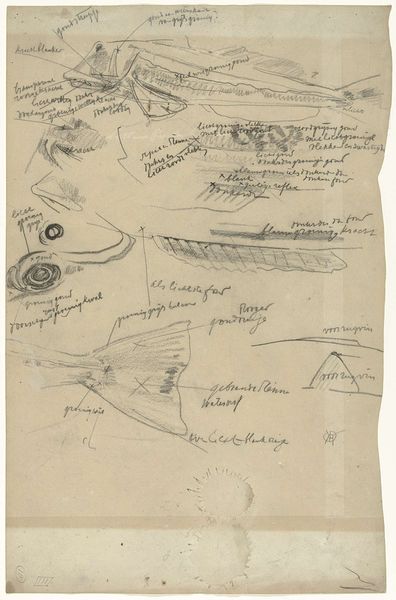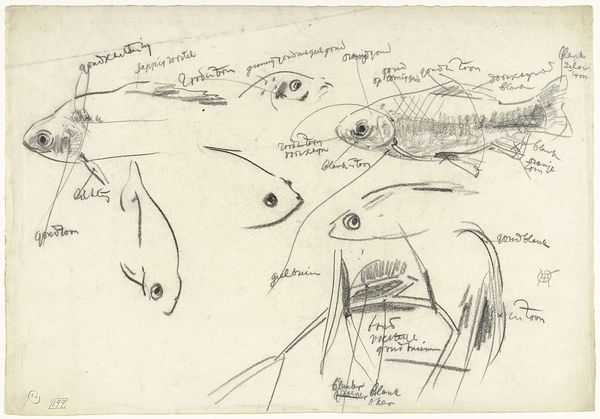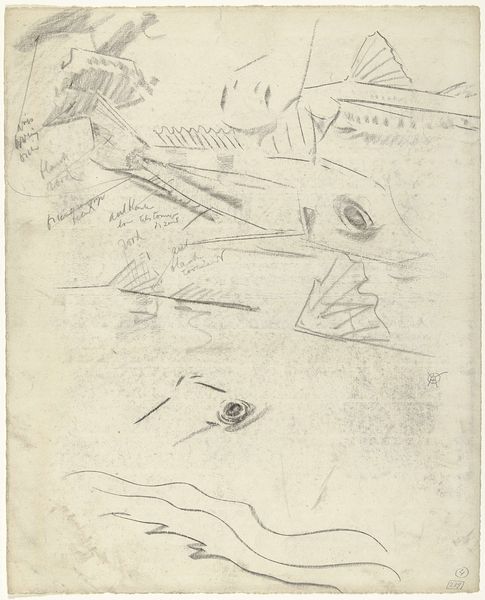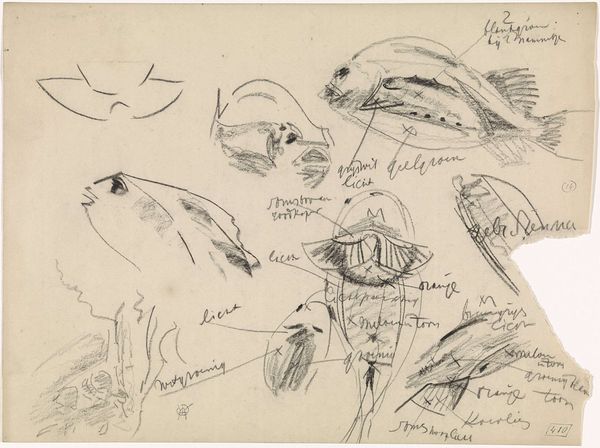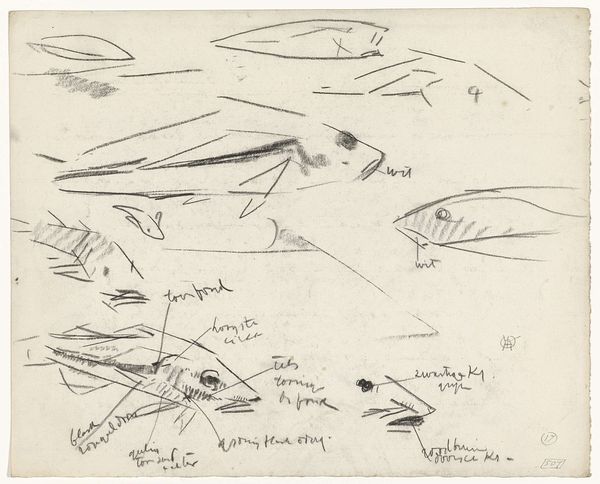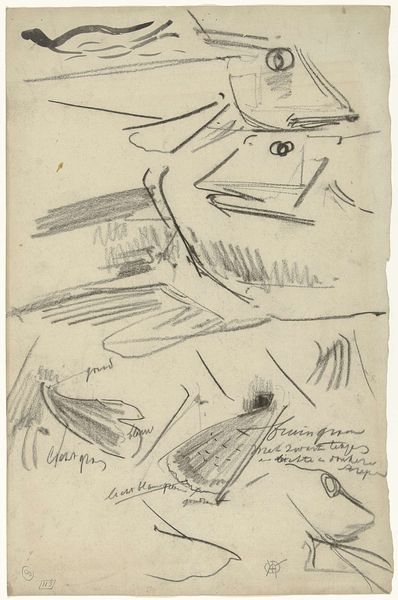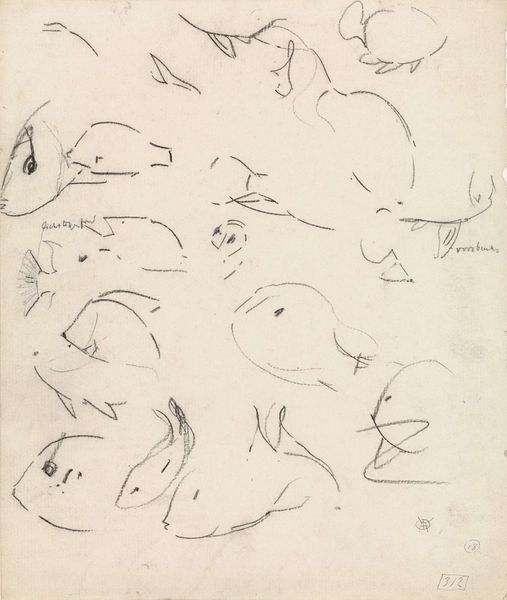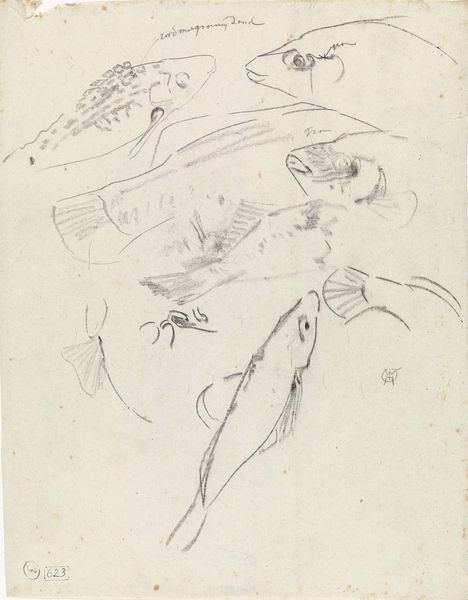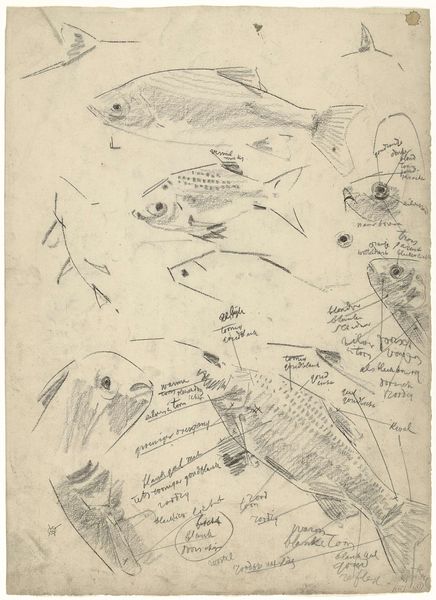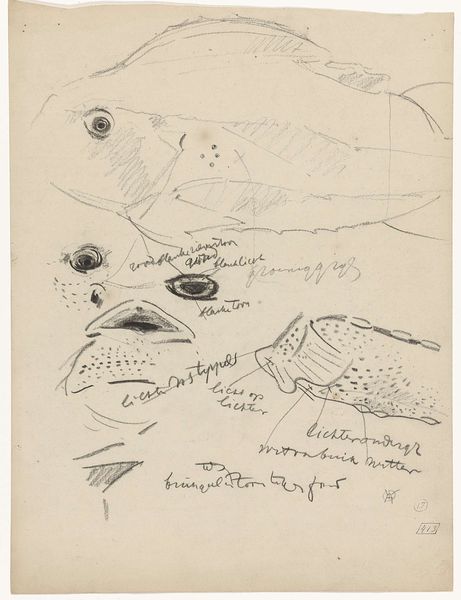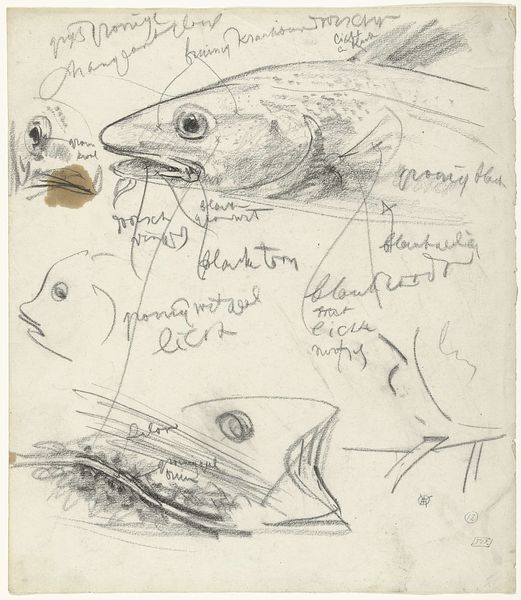
drawing, pencil, graphite
#
drawing
#
quirky sketch
#
pen sketch
#
personal sketchbook
#
sketchwork
#
ink drawing experimentation
#
pen-ink sketch
#
pencil
#
graphite
#
sketchbook drawing
#
storyboard and sketchbook work
#
sketchbook art
#
realism
#
initial sketch
Dimensions: height 436 mm, width 283 mm
Copyright: Rijks Museum: Open Domain
Editor: This is "Detailstudies van een poon, met kleurnotities," or Detail Studies of a Gurnard, with Color Notes, by Gerrit Willem Dijsselhof, made sometime between 1876 and 1924. It’s a pencil and graphite drawing currently held at the Rijksmuseum. I’m immediately struck by its sketchbook quality; you can see the artist working through the subject. What can you tell me about it? Curator: Look closely at the artist’s chosen media: graphite and pencil. Consider the accessibility of these materials in the late 19th and early 20th centuries. Drawing wasn’t just a preliminary stage; it was often the most direct, affordable mode of artistic investigation for artists navigating industrializing societies. Dijsselhof’s sketch is a product of its time. What does this tell us about the labor involved in creating "high art"? Editor: That’s a good point; it feels very immediate and accessible, which I guess is at odds with how we usually think about fine art from that period. So, this isn't necessarily a study *for* something else, but a complete work in itself, made using readily available materials. Does the subject matter - a gurnard, or sea robin – also play into that accessibility? Curator: Absolutely. A gurnard isn't the typical grand subject of academic painting. Dijsselhof’s focus shifts our attention to the everyday, the readily available resources in the artist's environment. Also notice how Dijsselhof annotates the sketches with color notes. It shows an interest in the scientific process, the breakdown of nature, but also, importantly, the labour of representing colour through readily available and reproducible materials, instead of expensive paints. What are your thoughts now? Editor: Seeing it through that lens, it's not just a drawing of a fish. It’s a record of artistic labor and resourcefulness, mirroring the changes in society around him. Curator: Exactly! This work embodies a challenge to established hierarchies and embraces art's democratic potential.
Comments
No comments
Be the first to comment and join the conversation on the ultimate creative platform.
